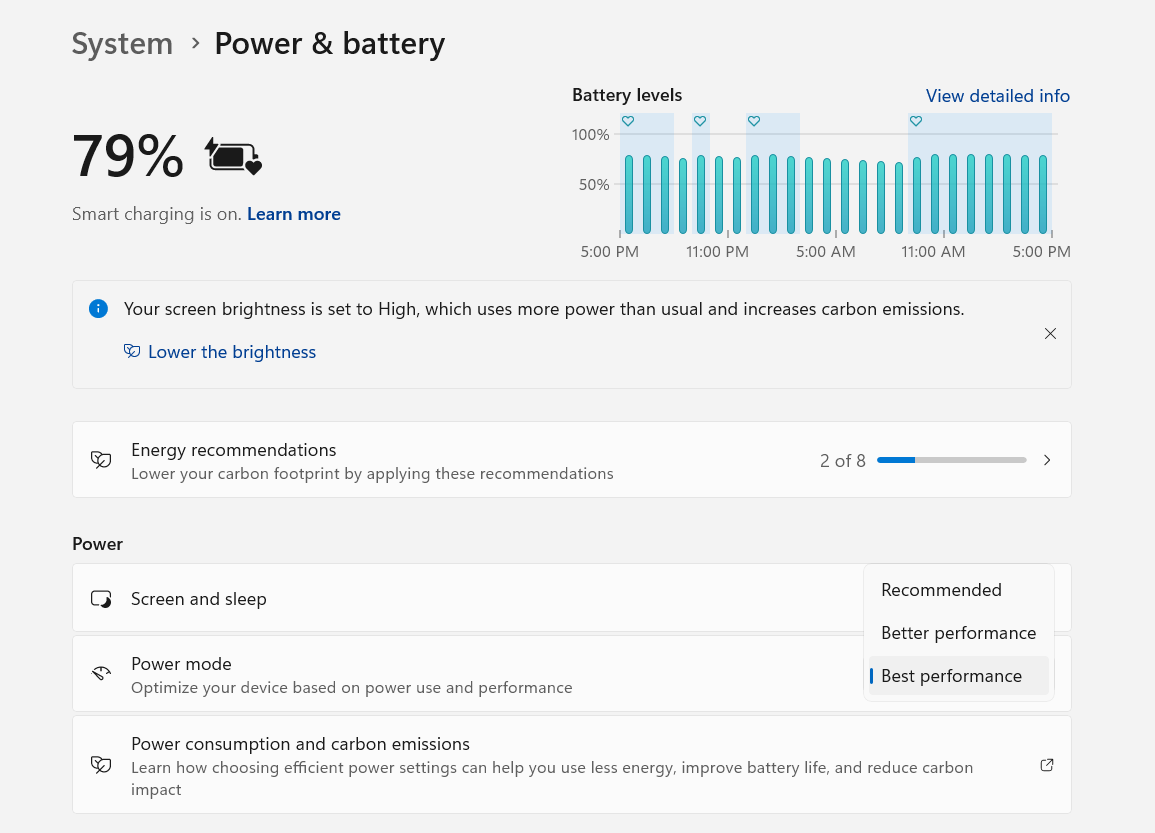
 Image: Alex Esteves
Image: Alex Esteves
If you’re going to buy Intel’s latest Intel Core Ultra 200S or “Arrow Lake” processors, here’s an important tip: run your system in Windows’ Performance power mode, and consider avoiding upgrading to Windows 11 24H2 entirely. Otherwise, performance could suffer greatly.
Intel confirmed testing by PCWorld and other reviewers that showed that performance dips if applications are run on Windows’ default Balanced power mode. And TechSpot’s review of Arrow Lake indicates that you’ll see a decent performance improvement while gaming on older versions of Windows 11, versus the latest feature update.
Intel’s Arrow Lake did not fare well in reviews by PCWorld and other sites, for two reasons. First, performance wasn’t expected to be any higher than “parity” between Arrow Lake and the older 14th-gen Core desktop processors, as Intel admitted to in gaming scenarios even before the Core Ultra 200S Series launched. Intel’s headline announcement was pitched as the real reason to buy Arrow Lake: dramatically lower power consumption, as much as half in specific cases.
Intel’s glitch means you need to make an adjustment
Overall performance, though, is what many people care about, and where Intel apparently fell short as well. Reviewers were supplied Arrow Lake testing hardware pre-configured to the Windows’ “Best Performance” configuration. That wasn’t obvious, however.
The Windows 11 performance slider is hidden away within the Windows Settings menu. It doesn’t have any explicit effects; Microsoft doesn’t tell you whether it raises the CPU clock speed, tweaks the GPU, or any other settings. Most users probably never adjust it.

Mark Hachman / IDG
We did. During testing, PCWorld spot-checked the power settings, dialing down the performance slider to what our system called the “Balanced” and even “Power Saving” configurations. Why wouldn’t you, just to see if you could reduce this power-sipping chip’s power even further?
But we made an astonishing discovery while putting the Core Ultra 9 285K through its paces: The chip only delivers expected performance when Windows is set to “Best performance” mode. Setting it to any other mode produced catastrophic results.
“The resulting score showed a 55 percent decrease in performance compared to the 14900K and 9950X on the same Balanced power plan,” using the Cinebench 2024 test of single-core performance, our review found. “The difference was even higher on the Power Saver plan, with a 67 percent drop.” In Performance mode, however, Intel’s new Core Ultra 9 285K performed as expected and went toe-to-toe with its rivals.
Gamers’ Nexus noticed the discrepancy in the power-plan performance, too. Techspot also adjusted the power plan settings, going a step further; it also tested using Windows 11 23H2 and even Windows 10. The results weren’t clear-cut: in Cyberpunk: 2077′s Phantom Liberty expansion, running at Windows 11 23H2 generated a peak score of 129 fps, versus 119 fps for Windows 11 24H2. Other games like Homeworld 3 produced the opposite results, with Windows 11 24H2 on “High Performance” mode generating frame rates of 87 fps, and Windows 11 23H2 dropping that to 70 fps instead.
“Unfortunately for Intel, we have to choose a single OS configuration for testing, and there seems to be no perfect option where everything works as it should, at least not at this time,” Techspot concluded.
Intel, then, has some work to do under the hood. The company responded to an inquiry by PCWorld by confirming that all of its testing was performed on Windows 11 24H2.
“We are aware of and looking into reports of lower-than-expected performance in Windows 24H2 using the Balanced power mode,” a company representative responded. “Consistent with our testing guidance for prior generations, we recommend using the Windows Best Performance power mode.”
AMD’s Ryzen 9000 desktop chips also had a bumpy launch, opening the door for Intel. But Intel, like AMD, clearly has some work to do to make things right — and Microsoft may need to put some elbow grease into Windows working correctly with Intel’s radical new Core Ultra desktop chips, too.
Author: Mark Hachman, Senior Editor, PCWorld

Mark has written for PCWorld for the last decade, with 30 years of experience covering technology. He has authored over 3,500 articles for PCWorld alone, covering PC microprocessors, peripherals, and Microsoft Windows, among other topics. Mark has written for publications including PC Magazine, Byte, eWEEK, Popular Science and Electronic Buyers’ News, where he shared a Jesse H. Neal Award for breaking news. He recently handed over a collection of several dozen Thunderbolt docks and USB-C hubs because his office simply has no more room.
Recent stories by Mark Hachman:
Intel’s Core Ultra desktop CPUs keep AI simple to make gamers happyHyperthreading is dead in Intel’s new Core Ultra PC chipsArm will cancel Qualcomm’s license to make the Snapdragon X Elite


